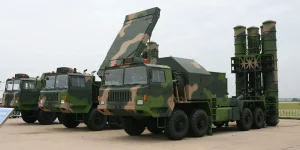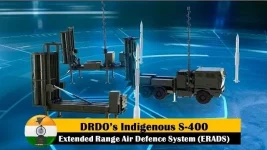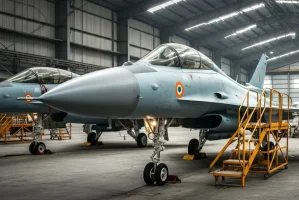- Views: 3K
- Replies: 8
The potential acquisition of long-range strategic bombers, such as the Russian Tu-160 "White Swan", has ignited a debate within India's defence circles.
Defence analyst VatsRohit recently weighed in on the advantages and disadvantages of such a move, highlighting the strategic flexibility offered by these aircraft, but also emphasizing the significant financial implications.
VatsRohit argues that the Tu-160, with its supersonic speed, intercontinental range, and massive payload capacity, would provide "tremendous capability and flexibility of employment" for India. The bomber could function as a "missile truck," capable of launching long-range cruise missiles at critical enemy targets from various locations within India's airspace. This would allow India to hold adversaries at risk across a vast geographical area, significantly enhancing its strategic deterrence.
A fleet of 10-12 Tu-160s, VatsRohit suggests, could enable India to strike targets deep within Chinese territory from multiple launch points. He emphasizes that the operational reach of these bombers is "limited only by the range of the missiles which it carries," potentially allowing them to operate from states like Himachal Pradesh, Bihar, Assam, Nagaland, and Arunachal Pradesh.
However, the acquisition of such a fleet comes with a hefty price tag. Each Tu-160 is estimated to cost at least $250 million, bringing the total cost of a 12-bomber fleet to around $3 billion, excluding operational and maintenance expenses. This raises questions about cost-effectiveness and strategic priorities.
VatsRohit acknowledges that India could instead invest in a robust arsenal of land-based ballistic, quasi-ballistic, and cruise missiles for the same amount. While these missiles offer a cost-effective deterrent, they require significant supporting infrastructure and are vulnerable to preemptive strikes due to their fixed locations.
The Tu-160's key advantage lies in its mobility. Unlike fixed missile bases, which are known to adversaries, the Tu-160 could be based in locations like Nagpur and Thanjavur during peacetime and deployed across India in times of conflict. This mobility provides a significant strategic advantage, enabling a dispersed and unpredictable deterrent.
Beyond land-based missions, the Tu-160 could also contribute to maritime security. Its range and payload capacity would allow it to deter Chinese naval forces in the Indian Ocean Region (IOR). Equipped with anti-ship missiles, the Tu-160 could target hostile fleets before they enter the IOR, a task that would require multiple refueling sorties for existing aircraft like the Su-30MKI.
Despite the Tu-160's strategic advantages, VatsRohit cautions that the decision must be weighed against India's other defence needs. He notes that a robust missile system can cover many of the same targets at a lower cost, especially with India's missile program developing systems with ranges exceeding 1,000 kilometers.
Ultimately, the acquisition of a Tu-160 fleet would represent a major shift in India's air power capabilities. While offering significant flexibility and firepower, the high cost necessitates careful consideration of long-term defence priorities.
Last edited by a moderator:




